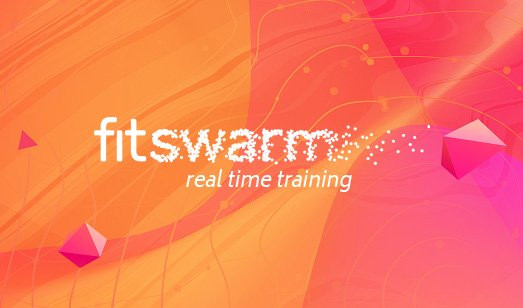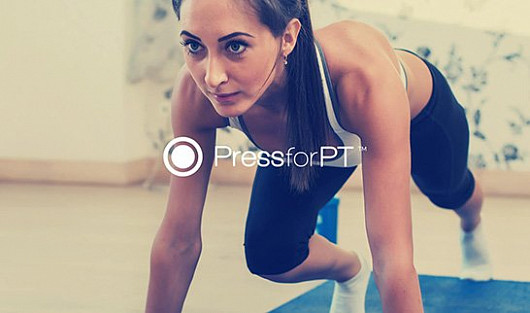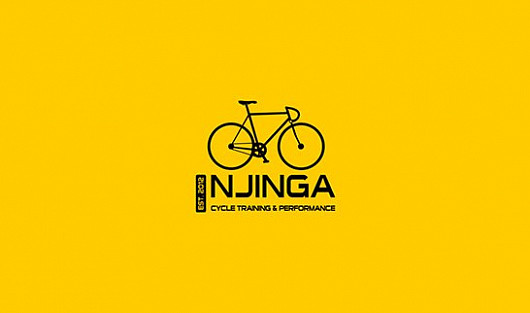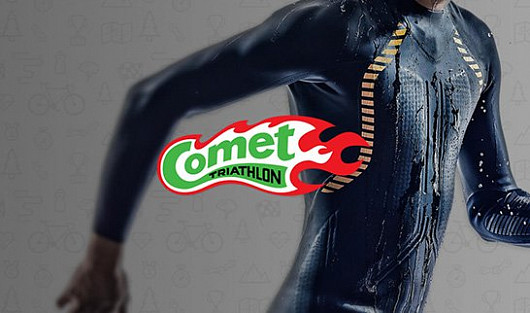Fitness Web Design
By Michael Macneil on Thursday, 21 September 2017
Designing a website for the fitness industry is a complicated process that needs to take into consideration a number of important factors. Many of these factors will be unique to your specific fitness related business. Within this article, we will cover what you will need to consider when creating a fitness related website, helping you to achieve the best possible outcome for your website.
Fitness Industry Covers a Wide Spectrum
There are many different types of businesses that are defined as fitness related, some of the main areas are outlined below.
- Health clubs
- Fitness centres
- Yoga Studio
- Cycling Studios
- Gyms
- CrossFit
- Aerobic centres
- Dance Studios
- Athletic clubs
- Country clubs
- Weight training
Requirements will change deepening upon the Industry you work in
The services you offer will significantly influence your website requirements. The needs of a Yoga Studio, will contrast significantly from a weight training gym, aesthetically as well as backend functionality requirements. Both of these businesses may require member management, however, online class bookings and schedules would be more relevant to Yoga.
With regards to the look and feel of your website, it must embrace your target market demographics. Demographics will vary depending upon the fitness industry you operate in, factors that you need to consider and discuss with your marketing and web design agency could include:
- Gender, you may feel that this is irrelevant for a fitness studio but a study from IHRSA’s shows that females are five times more likely to attend fitness groups than males.
- Age, typically a CrossFit studio would not be targeting pensioners as it can be very intensive, where as a pool exercise class might well do.
- Income, if you are an exclusive fitness studio your design may want to target that given demographic.
- Children, are you targeting mothers? If so, you might want to showcase creche facilities.
Photography and Aesthetics
Whilst on the topic of aesthetics, images will form an extremely important part of your website design. The fitness industry is very emotive, images, graphics and animations will play a significant role converting your visitors into paying members and customers. If you do not have any professional photography, this is something you should discuss with your web agency of choice. They can either work with you to source relevant images, or help you with the photoshoot. Do not use poor quality or irrelevant imagery, this will detract from your website and lead to a poor conversion rate.
In addition, make sure you have the rights to use these images on your website. Copyright infringement penalties are very high and without warning. Automated software checks the internet for copies of protected images and sooner or later they will find them. Do not be surprised to have a request for thousands of pounds. For more information, click on the link to an article on Wiki about Getty Images.
Fitness Industry Software, Which One Is Right For Me?
Unless your requirements are freakishly bespoke, you can pretty much guarantee that you do not need to reinvent the wheel when it comes to creating the backend functionality and workings for your website. We can create you a unique design that can integrate with a booking system, accounts solution etc. Many of these solutions are tailored towards specific fitness sectors, such as Cross Fit, Yoga or cycling etc. Others are feature rich and will cover virtually all scenarios. Unless you have a massive budget and need a totally bespoke solution, it would be advisable to look for a prebuilt software. Some of the features you may want to be included within the solution are outlined below:
- Automated signup process
- Member management
- Member profiles
- Book classes online
- Class check-in functionality
- Class scheduling and management with calendar view
- Reservations management
- Event management
- Staff management such as check and out
- Integrated and secure payment
- Billing and invoicing
- Mobile bookings and payments
- Real time video
- Automated email and text / notification and alerts
- Facebook and social media integration
- Key metrics reporting
- Ability to integrate additional third-party software API
- Deployment on Cloud, SaaS, Web, Android, iOS
Below we have listed ten of the main fitness software solutions available at the moment:
- MINDBODY
- Vagaro
- Zen Planner
- Glofox
- Fitbot
- GymMaster
- Front Desk
- RhinoFit
- WellnessLiving
- BookSteam
Each of these solutions have their pros and cons, it is important to thoroughly research the best fit for your business and website requirements. As well as looking at their features and customer reviews, it is also important to understand the support they offer. Often, they will provide professional documentation, webinars, telephone support, live chat and in-person help if required.
Find out their business hours. If you are a twenty-four-hour gym and they are only open from 09:00 – 17:00, then this is no good if you have an issue relating to their software after hours. In addition, remember that the business hours listed might be for a different time zone (although a lot of these solutions are open 24/7). Do they outsource their help to call centres that know nothing about the software? Having the right support will be crucial to the smooth running and success of your website.
Research what operating systems can you deploy the software on, it is best to cover all angles so that you are covered for the future. It is worth finding out if their software allows for external third-party integration, this could be for your accounts software, CRM or for external marketing purposes.
Price, as always, will be an issue. Costs vary greatly between the different fitness software providers, it is worth taking your time and looking closely at their pricing plans. Is there a start-up fee? Is there a free trial? Do you pay monthly or annually (do they provide a discount for annual payments)? Do they offer any other discounts? Are you tied into a contract? Do they provide a free demonstration? How much have they increased their prices annually in the past?
What Are The Objectives For Your Fitness Studio?
Your website objectives will form a fundamental part of the web design process, and will need to be ascertained ideally before you contact a web agency or build your own site. What are the goals for your website? Some pointers are outlined below:
- Purely to act as a marketing tool for your fitness centre
- Promote events
- Book classes
- Lead generation
- Encourage registrations and membership
- Gain marketing information
- Educate your visitors
- Sell health-related products
- Automate and help take the stress out of running your business
Providing this information to the web design company will influence how the website is designed to help achieve these goals.
Responsibilities of the web design company
The responsibilities of the web design company is to produce a striking, user-friendly and impressive website experience that influences your visitors and converts them into paying customers. Some of the key areas your agency of choice will need to cover include:
Responsive design, your website needs to work across a wide range of devices and by using a responsive design this will efficiently scale the design to fit that device. This is imperative for most fitness related websites, as many of your visitors will be using their smart device to book, pay or join your studio.
Usability, clear and easy-to-use navigation are paramount for any web design. Ensuring that your website is user-friendly, fast loading with clear presentation of information, easy to use functionality centered around the site visitor will create a positive experience.
Search engine optimised, the fitness industry is a competitive market and making sure your website can be found for your key terms will be imperative to the profitability and success of your business. Your design agency of choice should work with you and research key terms you should consider targeting. They can look up what your competitors are targeting, how many people search for those terms and recommend other popular keywords. In addition, ensuring that key SEO barometers are utilised such as headings, titles, headers, content, link building (internally and externally), content to HTML ratio, image optimisation and file size, URL structure, server security etc.
Let’s use the example ‘CrossFit Richmond for Google.co.uk using Ahrefs (08/06/2017)
Blitz CrossFit is number one:

Key:
AR –Ahrefs Rank (AR), the number position 1 belongs to the website with the best backlink profile
DR – Domain Rating from 0 – 100 (100 being best)
UR – Shows how strong the backlink profile is
Backlinks – Number of backlinks pointing to the website
Domains – Number of unique domains pointing to the website
The keyword difficulty for the term, ‘CrossFit Richmond’ is ranked as 11 out of 100 for how difficult it will be to rank on Google for the first page. The positives and negatives below outline what they have done to achieve their ranking, including areas where they could improve.
Positives:
- They include their keyword within their title tag ‘CrossFit’
- They have implemented header tags
- They have good keyword consistency using their keywords
- They utilize Social Media
- Good text to HTML ratio
Negatives:
- They could add additional keywords into their Title such as ‘West London’ or another location they are targeting
- It would be useful to increase the number of backlinks from authoritative domains
- Their home page is over the 3MB total file size recommendation
- Their website is not SSL enabled (this is explained shortly)
- Poor Google mobile speed test 56/100 (images need further optimising)
Seamless integration, your chosen fitness software solution needs to be flawlessly integrated into the site design, ensuring that the front end and backend assimilate perfectly. You may have the best-looking fitness industry website, however, if it does not function correctly you will lose business and damage your reputation.
All websites should now be SSL (secure socket layer) enabled. Google uses this as a positive ranking indicator, whilst not a huge one, it still adds value. In addition, any website that collects information or takes payments will lose custom if they are not SSL enabled. If you are unsure how to check, below are two examples of one website using a SSL and another without.
SSL enabled

Not SSL enables:

Clean code (HTML, CSS, XML) is important to ensure that you get the most out of your fitness related website. Basically explained, it means that your website is standards compliant, free of clutter and unnecessary code and you are using it as it is intended. As well as improving the performance of your website, it makes it easier to maintain and develop in the future as well as other third parties to work with it.
Additional features to help convert your website visitors
Live Chat, this is a great way to communicate with your website visitors and answer any queries they might have, and at the same time promote your fitness studio. There are many advantages of live chat, these include:
- Cost-effective solution with minimal setup fees
- Allows you to page track creating triggers at specific points
- Can convince and convert potential customers before they leave
- Creates a positive impression
Add Google Analytics or another powerful tracking software. Many businesses include Google Analytics in their code, but do not use its full potential. You can use analytics to find out the following and much more:
- Understand your visitors and adapt the site to their needs.
- Where in the process are people ‘dropping’ out during membership registrations?
- Which pages have the highest dropouts?
- Are visitors viewing your fitness classes or content you want them to?
- Are you targeting the right geographical location? If your health club is in London but your visitors are mostly from Wales, then you know there is a problem.
- Where have people found your fitness centre?
- Which content has the most interest (clicks), then increase this content type.
- Monitor campaigns such as Google Ads and determine if they are viable.
Add testimonials and case studies, show potential members real-life scenarios of how you can help them. By creating case studies that customers can relate to, you have a higher chance of them reading the article and converting them at the end. A good blog on how to write effective case studies can be found at Kissmetrics https://blog.kissmetrics.com/creating-a-great-case-study/
Use Facebook advertising, implemented correctly this can be a powerful and effective marketing tool. One of the main advantages of Facebook advertising is its targeting capabilities. It allows you to target an audience that has visited your fitness website, you can also target people that have seen your PPC (pay per click) adverts but did not click through. It also allows for a powerful demographic selection, if your fitness studio targets women, aged 20 – 45, located in Twickenham, Facebook will allow you to do this. There are also multiple bid types available and the minimum spend per day is just £1. For more information visit Facebook Business Advertising https://www.facebook.com/business
Call to action triggers, these need to be clear with specific end goals. This could be to view your fitness equipment, book classes, browse your site for over two minutes or join your newsletter. Below are some aspects you can use to encourage visitors to complete a desired action
- Clearly state the benefits of your fitness studio with related services showcasing examples
- Build trust to encourage contact through your impressive industry knowledge
- Clear path to achieve your website goals
- Make it as simple as possible for the end user, do not create barriers or reasons for them to leave
Create a newsletter and encourage members and site visitors to sign up. It is a good idea to get you newsletter designed at the same time as your website, making sure that it complements the new look and feel. Outlined below are some of the reasons how newsletters can help your website.
- Newsletters keep you fresh in the minds of your members and potential customers
- They allow you to generate publicity and to display your business
- Often, they increase traffic to your website and promote specific events
- They can include some great analytics allowing you to gain an understanding of your audience
- Social media sharing potential
- It is relatively cheap and should not take up too much of your time if done properly
It is important to pitch your newsletters at the right time, for instance, a lot of people want to join fitness centres just after the New Year, this could be a great time to send newsletters to recipients that are not currently members. It is crucial to make sure your newsletters add value, providing worth and not an annoyance (which will be shown through the numbers lost after each newsletter is sent out). Some of the most well-known email marketing service providers are Aweber, MailChimp, ConvertKit, Campaign Monitor and Get Response. It is worth researching these different providers and any others you may know, as they all offer different packages and features that you can tailor to best fit your business needs.
Conclusion
There are thousands of fitness related websites out there, research them through Google, get ideas from the top-ranking sites. Look at your specific fitness industry and note down what they are offering, which software they are using, how they are promoting their website and which elements catch your eye. Note down all their main menu titles, the types of images they are using, call to action triggers and anything else that stands out. All this information will help you gain an understanding of how you will want your website to function and arm you with information when you are ready for the web design process.
About the Author
Michael Macneil has been involved in the print and web design industry for over twenty years, currently the Creative Director at ID Studio based in 56 Kew Road, Richmond and 30 Stamford Street, London. At ID Studio, we have some great experience working with the fitness industry, creating some awesome websites with some very powerful backend functionality. Some of our recent projects include:
If you require any further information relating to this article or web design in general, please feel free to contact me for more information. You can call us on 020 8948 5808.










